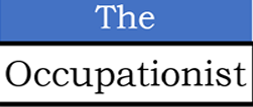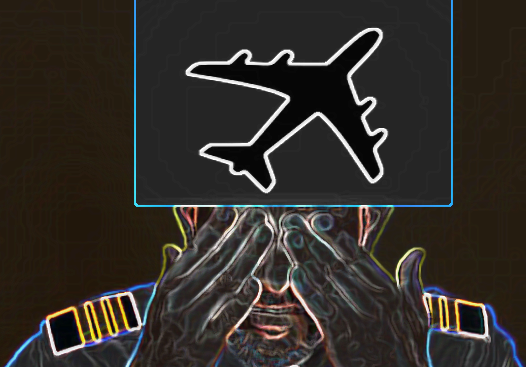Fatigue is a feeling of being extremely tired. It is a feeling of constant exhaustion, burnout or lack of energy. Fatigue is associated with a strong feeling of sleep.
Everyone is aware that fatigue can lead to accidents, wrong decisions etc. Yet people try to behave bold, and even drive personal vehicles as well as public transport vehicles including bus, trucks and aircrafts when fatigued due to lack of sleep. This attitude should change.
Pilots are no exceptions to fatigue – in fact, they are most affected and errors during flying cost lives, reputation and fear among air travelers.
Fatigue affects every adult at some point of their life. Most of the time fatigue is transient, yet it brings, for example, almost 1.5 million (15 lakhs) Australians to their doctor.
Pilots are no exceptions to fatigue – in fact, they are most affected and errors during flying cost lives, reputation and fear among air travelers.
The International Air Transport Association (IATA), a global grouping of airlines, including from India have long identified fatigue as a potential safety risk and the industry developed extensive Standards and Recommended Practices (SARPs) around managing fatigue risk. However, they are not followed strictly.
Additionally, under the fatigue reporting system, an Indian pilot can report to the Safety department of the airline concerned and the report is then sent to the Directorate General of Civil Aviation (DGCA).
For example, a senior captain from a leading airline based in India said the silent danger of fatigue needs to be addressed more aggressively as it affects one’s cognitive abilities and psychological conditions.
IndiGo airlines became the first airline in India to use a gadget that can detect fatigue and alertness level before and after flights.
The captain further told PTI (Press Trust of India) that doing two consecutive nights of duty in multiple sectors most of the time results in fatigue and the existing fatigue reporting system is not popular among pilots.
In a recent survey of 542 pilots by NGO, Safety Matters Foundation, it was found that pilots admitted to falling asleep without planning or consent of the other crew member and had even experienced micro sleep. These observations make fatigue is a worrying issue for the fast growing Indian aviation sector.
The pilots in India and in most other countries are tested for alcohol levels. However, they were not tested for fatigue levels. Recently, IndiGo airlines became the first airline in India to use a gadget that can detect fatigue and alertness level before and after flights. Meanwhile, the existing system where pilots can ask to be removed from flight duty if feeling tired will continue.
The fatigue test using the gadget takes about 5 minutes.
IndiGo will also have a sleep researcher to improve its fatigue management system. The gadget is from Thales, a French company.
It is hoped that other airlines in India as well as in other countries will follow the IndiGo example.
Ashim Mitra, senior VP (Flight Operations) at IndiGo in a communication to pilots said, ‘After years of research, Thales have developed a fatigue detection model, offering detailed insights into demographic data, including routes, pairing, crew profiles and more, going beyond traditional scheduling models.’
Mitra further added, ‘this initiative positions us at the forefront of airline safety and innovation, setting an industry standard. It also underscores our commitment to our pilots’ wellbeing, ensuring their health, mental wellbeing, and job satisfaction, ultimately ensuring passenger safety.’
When leaders talk about wellness to their employees, sleep should be a good starting point, rather than nutrition or exercise!
Fatigue management is in the domain of Occupational Health. Whether it is flying aircrafts, running inter-city transport buses or trucks, driving personal vehicles, working in shifts in factories or nuclear reactors, fatigue management should be an important consideration in managing employee health as well as in accident prevention.
In the energy companies that I worked (Shell, bp), fatigue management (FM) courses were offered to all employees involved in driving (even personal cars) and in any other dangerous operations. Such initiatives not only demonstrate an image of a responsible employer but also transmit a message about safety at work. Fatigue also reduces productivity and having FM in place mitigates it.
Fatigue is an indication of an underlying illness (including occupational illness) which can lead to industrial or vehicular (including aircrafts) accidents. When industrial accidents happen, the press and the people do not over-react once they know that the organization had systems (like Fatigue Management) in place, thus mitigating any reputational harm due to an accident.
A fatigue detection gadget should be made an important requirement in hazardous industries as much as an AED as more lives will be saved due to industrial as well as vehicular accidents.
Years ago, Dr David Flower, an Occupational Health physician, had done extensive work in alertness management in long-haul flying for flight and cabin crew. In 2000, he was a member of the British Olympic Association’s Acclimatization Working Party, advising the British Olympic team on the management of jetlag in preparation for the Sydney Olympics in 2000. This was to improve performance among sportspersons.
An Occupational Health (OH) physician can be an immensely resourceful contributor in managing fatigue management in a company’s operation along with safety professionals.
It is important to know that fatigue is a symptom and not a medical condition. Fatigue can be mental or physical or a combination of both. It can be transient, cumulative or circadian. It can be physiologic, secondary or chronic. Hence it is important to find out the reasons in an individual complaining of fatigue, so that it can be prevented.
An Occupational Health physician can be an immensely resourceful contributor in managing fatigue management in a company’s operation.
There are many medical conditions (anemia, depression, fibromyalgia, chronic diseases of kidney, liver or lung, viral or bacterial infection) that can cause fatigue but it is equally important to check if it is due to lack of sleep. This is because transient fatigue is more common which is due to extreme lack of sleep or extended awake hours within 24 to 48 hours, and is a major cause of serious accidents.
A fatigue detection gadget should be made an important requirement in hazardous industries as much as an AED as more lives will be saved due to industrial as well as vehicular accidents. Occupational Health physicians should impress upon the management to invest in such a device.
To know more, contact
____________________________________________________________________________________________
Dr Ajay Sati is an Occupational Health physician who prefers to describe himself as an Occupationist, to denote, ‘an expert in diseases and other concerns of occupations.’ Dr Sati has managed health and wellness programs in industries he worked, like the atomic energy, and energy (oil & gas) in India and overseas. An experienced virtual consultation expert he was involved in many greenfield and brownfield projects providing inputs from health point of view.



